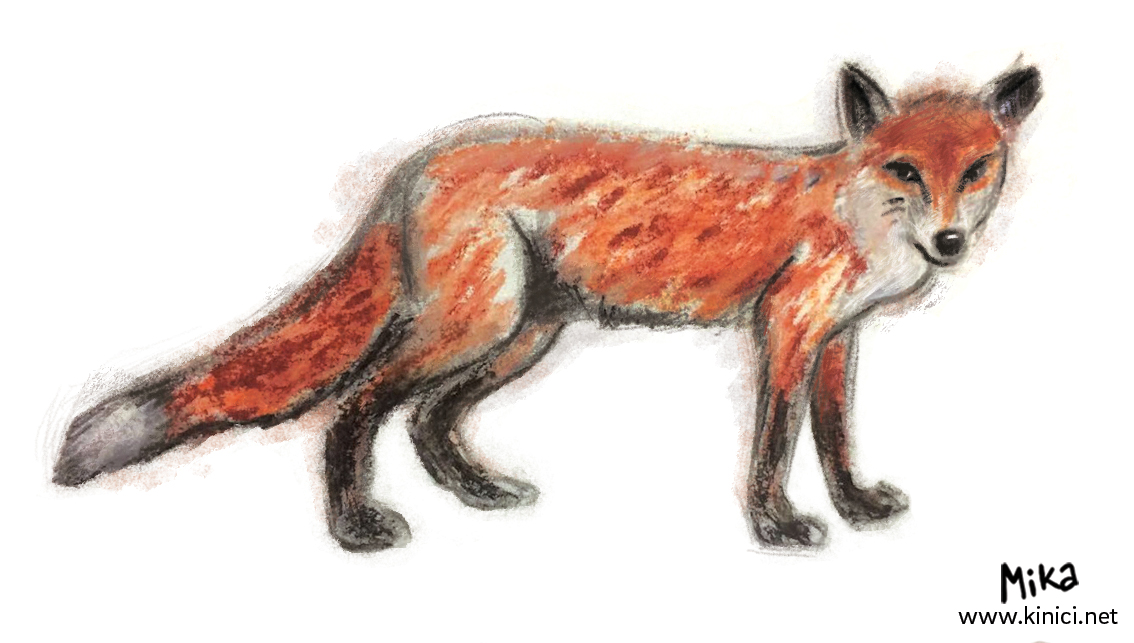 Kingdom: Animals (Animalia)
Kingdom: Animals (Animalia)
Phylum (Phulum): Chordates (Chordata)
Subphylum (Subphulum): Vertebrates (Vertebrata)
Class (Classa): Mammals (Mammalia)
Order (Ordo): Carnivores (Carnivora)
Family (Familia): Dogs (Canidae)
Genus (Genus): Vulpes
Species (Species): Red Fox (Vulpes vulpes)
It is very cautious and careful when it spots something unknown, which is why it is popular in fables, sayings, fairytales, poems...
Appearance
Red fox is 35–50 cm tall, weighs 5–11 kg and is 45–90 cm long plus the tail which length goes from 30 to 50 cm.
Red fox is the biggest fox. As we go from North to South, foxes are smaller, weaker and have less red tint to their fur. Thanks to elongated snout and shape of the ears they resemble coyotes, but with shorter legs. The tip of the tail in Red foxes is always white.
Lifestyle
If it is in any way possible not to dig its den, it will settle in deserted badger dens, or share the space with it, although they do not approve the company of other animals.
Sometimes they will bark or howl, especially in the winter during snow and freezing weather, but most commonly during mating season.
Food
It is a carnivore, but also an omnivore and carcass eater. It hunts roes, rabbits, hares, fish, but also insects, grasshoppers, worms, pears, plums, grapes, strawberries. It will most likely eat mice which are probably its main resource. It goes down to cities finding food in garbage, since it feeds on carcasses.
Habitat
It is very adjustable and populates everything from deserts to mountains and city centres. Red fox is the most prominent carnivore n the world. It populates forests and open areas of North America, Europe and Asia, while it was brought to Australia in 1780.
